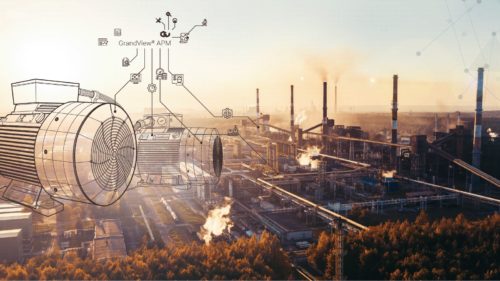Improving aircraft design with machine learning
Researchers at Caltech and Harvard have developed a way to use machine learning to further improve the aircraft design process.
Machine Learning Insights
- Design processes can make or break efficiency. While certain experiments and simulations can successfully be used for testing, it can also be too costly and too time-consuming. Using computer simulations to model turbulent airflow is much cheaper and faster. However, trillions of grid points needed to run a full simulation brings its own time constraints.
- Supervised machine learning, which involves human input, makes it semi-supervised. The model is the foundation for the future of identifying simple, flat and complex turbulent airflows. The goal is adaptability that will lead to more accurate predictions.
Although new designs can be tested effectively in full-scale wind-tunnel experiments, repeating those tests for each of the hundreds of prototypes created in the design process is prohibitively expensive and time-consuming. Computer simulations of turbulent airflows offer a cheaper, faster solution. The catch, though, is that a truly accurate simulation must capture resolutions that are as fine as the miniscule dust particles influencing the airflow surrounding a plane, as well as resolutions as large as the scale of the Earth—andthatis also prohibitively time-consuming.
“你需要数十亿甚至数万亿的网格points to run a fully resolved simulation of a simple aircraft,” said Jane Bae (BS ’11), an assistant professor of aerospace. “If you were to resolve all of the scales from the full size of the aircraft down to the smallest scale of the flows, you would need about 100 years to get a fully converged simulation, even with the current supercomputing power.”
There is, however, a work-around: focusing on modeling the structure of the turbulent flow near a solid boundary or wall—that is, in the areas adjacent to an airplane’s surface. Indeed, the flow in these near-wall areas can be simulated with models using relatively “coarse” grids the size of a 10-by-10-meter cube, instead of finer grids the size of a microscopic speck of dust. The resulting model also works as a proxy for the turbulent flow in areas farther away from the wall, estimating those finer grid models without needing to fully resolve them.
Although such “wall models” offer a potential way to save on the time and money required for turbulent flow simulations, most of those in use employ relatively simple physics—representing, for example, the flow of air over a flat surface. Real-world situations are not so simple. Case in point: the curvature of airflow that occurs where an airplane’s fuselage meets the wing.
“If you have a curved surface, the physics of the flow changes slightly, and the current wall models can’t adapt to it,” Bae says. To compensate for these complexities, simulation designers would need to manually switch between different wall models based on the individual parameters of the flow. Or, as Bae and colleagues suggest, designers could instead train the simulation itself to adapt to the different types of flow configurations with the help of machine learning.
A paper co-authored by Baeand Petros Koumoutsakos, the Herbert S. Winokur, Jr. Professor of Engineering and Applied Sciences at Harvard, lays the foundation for developing such a model. The paper was published on March 17 inNature Communications.
Bae and Koumoutsakos’ wall model utilizes a semi-supervised variation of machine learning known as reinforcement machine learning to account for the complex shape of an airplane. At its core, machine learning is the process of computers using algorithms to make intelligent decision based on data. In reinforcement machine learning, the algorithm is trained to make decisions based on a reward system.
“When a dog does something that you want, you give it a treat,” said Bae, explaining reinforcement, or learning based on a reward. In reinforcement machine learning, “the model is given a state, it gives an action, and if the action is good, it is given a reward,” she said.
This contrasts with supervised machine learning, which trains an algorithm with data inputs labeled by humans. In a fully supervised machine learning model, an algorithm is given images with identifiers like “dog” or “not a dog,” and eventually the algorithm learns when an image is showing a dog.
由Bae和Koumout使用的机器学习模型sakos is already trained to identify turbulent flows over flat and simple surfaces, so it can apply that knowledge to turbulent flows over complex surfaces; as such, the model issemi-supervised.
Using information already known about turbulent flows over simple, flat surfaces, Bae and Koumoutsakos’ wall model can then define what constitutes rewardable behavior through multiple iterations of their algorithm. If an action decreases the stress near the boundary of the aircraft design in the current iteration of the algorithm compared to the previous iteration, that is an improvement—whichisthe reward in this case. Based on this feedback loop, the wall model progressively learns what is the best action to give based on the states it is given. Instead of manual inputs telling the model how to deal with a flow over a flat or curved surface, the model can figure out the best response for each scenario without being explicitly told what to do.
“If you can develop a model that can adapt to the different types of geometries and flow configurations that exist in a complex geometry like an aircraft, you can get much more accurate predictions,” Bae says. The current model in Bae’s paper is a foundation for developing such a model.
“This is a stepping-stone,” Bae said. “This is the general direction that we think is going to be the future of wall models.”
This research was made possible through a grant from the Air Force Office of Scientific Research (AFOSR) Multidisciplinary University Research Initiative (MURI) project.
– Edited by Morgan Green, associate editor, CFE Media and Technology,mgreen@cfemedia.com.
Do you have experience and expertise with the topics mentioned in this content? You should consider contributing to our CFE Media editorial team and getting the recognition you and your company deserve. Clickhereto start this process.







